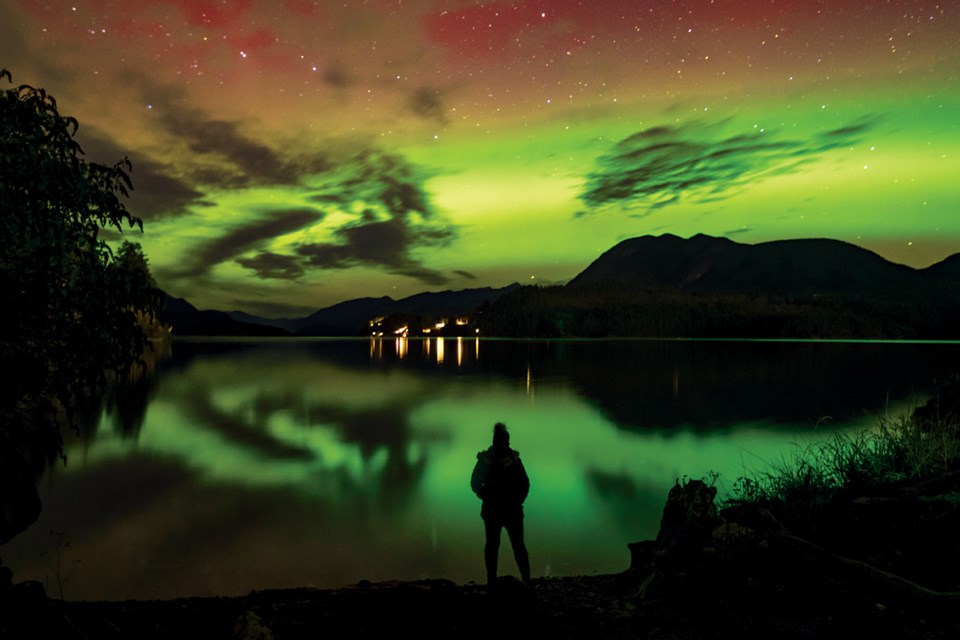As a solar storm pushed its way from the Sun, the Earth and much of Canada was “lucky” to be in the right place at the right time.
On Monday night, Oct. 11, sightings of the northern lights were reported anecdotally from across the country and near the Canadian-American border. Reports started around 9:30 p.m. in B.C.
The event was likely caused by a strong solar wind coming from the Sun, John Manuel, a senior program scientist of solar-terrestrial sciences with the Canadian Space Agency (CSA), told Coast Reporter. The Sun is not in a constant state of brightness, and there can be a change in its weather. In this case, a solar flare from the Sun also pushed material toward Earth.
“Usually, this sort of blast of material from the Sun just completely misses the Earth, and we didn’t even know what happened apart from our satellites and such,” Manuel said.
“But this time, we were lucky and the Earth was right in the way, and the timing of it was great for Canada that night.”
The aurora can typically be seen toward Yellowknife, Yukon and northern Quebec, but the recent storm of fast solar winds may have pushed it as far south as Washington state.
And sightings of the northern lights are likely to become more frequent.
Since around 2020, there have been very few auroras because the Sun is coming out of a quiet cycle in its weather and climate. It’s now building its way back up to a solar maximum, and more auroras should appear up to 2025, Manuel said.
In 27 days from the Oct. 11 event, the Sun will have rotated back to the same position the solar flare came from.
“So in 27 days’ time, there’s an increased chance – it’s no guarantee, but there’s an increased chance – that something could happen if this storm persists as long as it can,” Manuel said.
As for the Sunshine Coast, Manuel said there’s a good chance aurora borealis could be seen more in the winter to come, especially as the nights get longer. The more northern locations on the Coast, with the right weather conditions, will have better odds. The key to increasing your chances, Manuel said, is to get your friends to call you if they see the aurora borealis.
“They are really striking if you ever see them,” Manuel said of the lights. “The way they move across the sky, how bright they can be, how much they can change. It’s kind of hypnotizing, the way that it’s like being on the seashore watching a storm roll in. You just stand there and watch, and just be amazed by it all.”
On Monday, the lights may have been harder to see on the Sunshine Coast with the naked eye, but photographer Sherry Nelsen captured the spectacle on camera at 10:47 p.m. from the shores of Sechelt Inlet.
While the colours were faint, she was able to pick them up with a long exposure. (Sky watchers also avoid other light sources, such as a cellphone or street light, in order to adjust their eyes to the night sky.)
“I’ve been out many times in the last few years trying to see them here,” Nelsen told Coast Reporter. “It is about as rare as spotting a unicorn!”
CSA is still studying the impacts the aurora can have on technology here on Earth.
In 1989, the northern lights caused a power blackout for almost all of Quebec. Since then, hydro companies have caught on, but space weather can still cause problems with navigational and communications systems.



